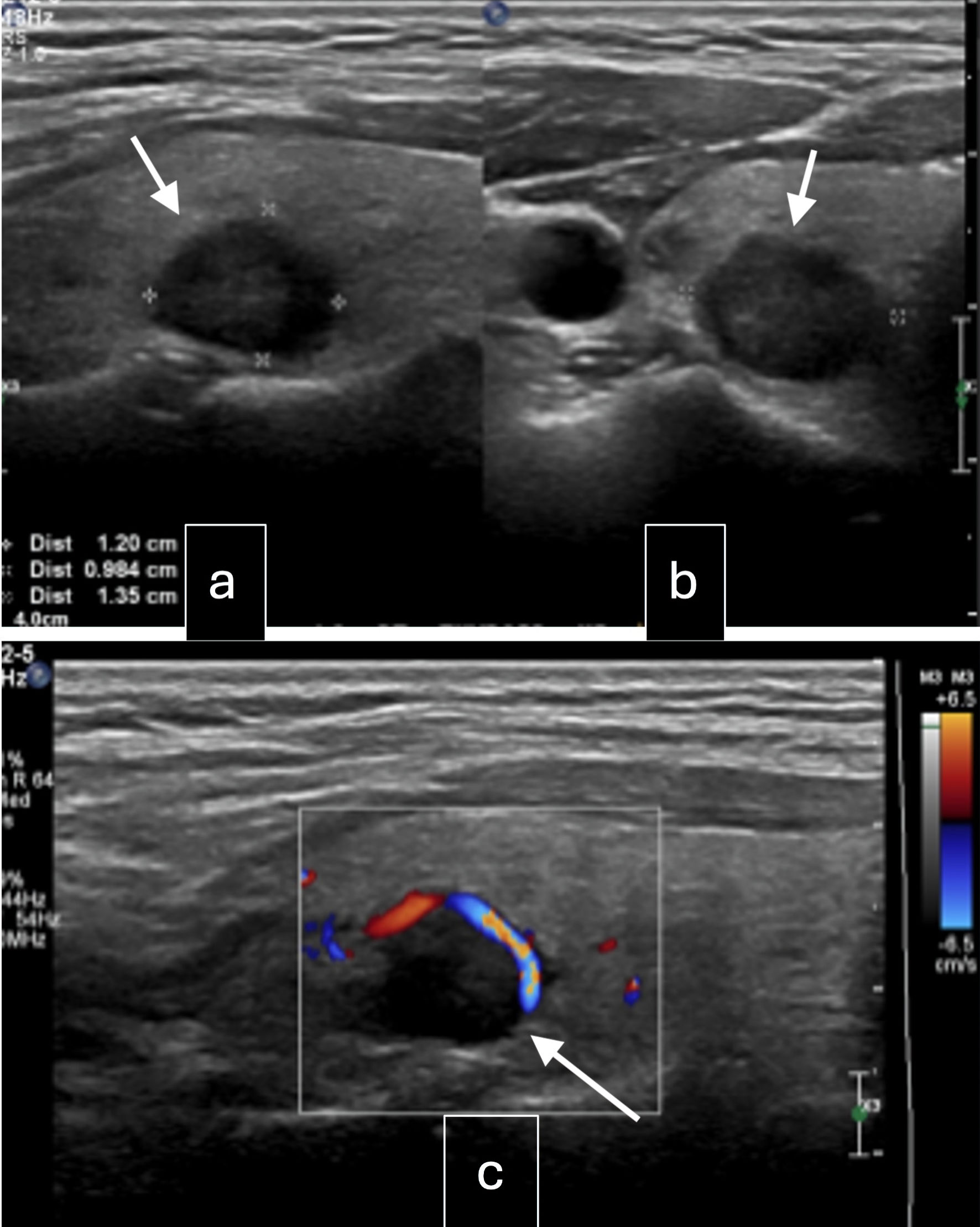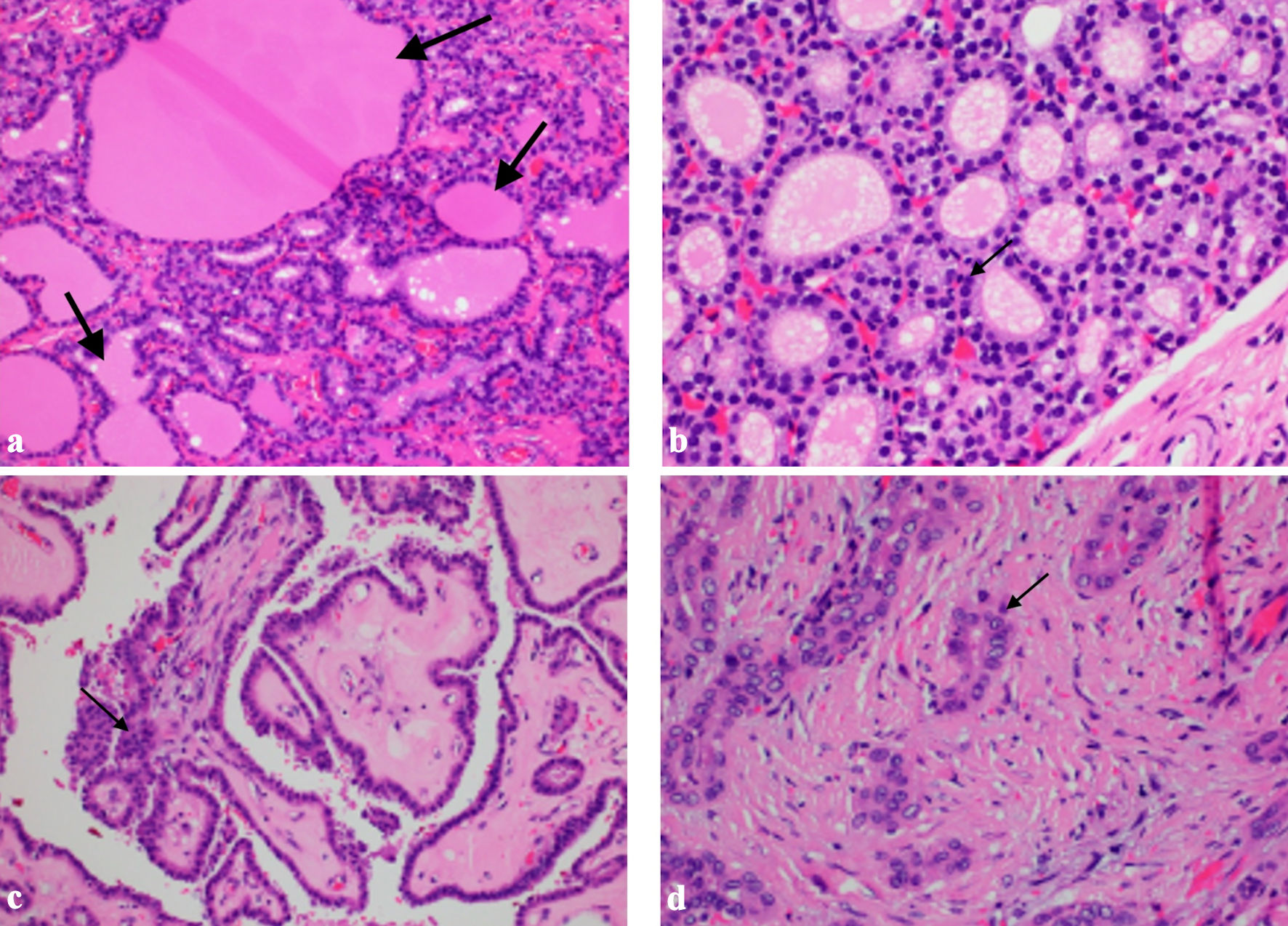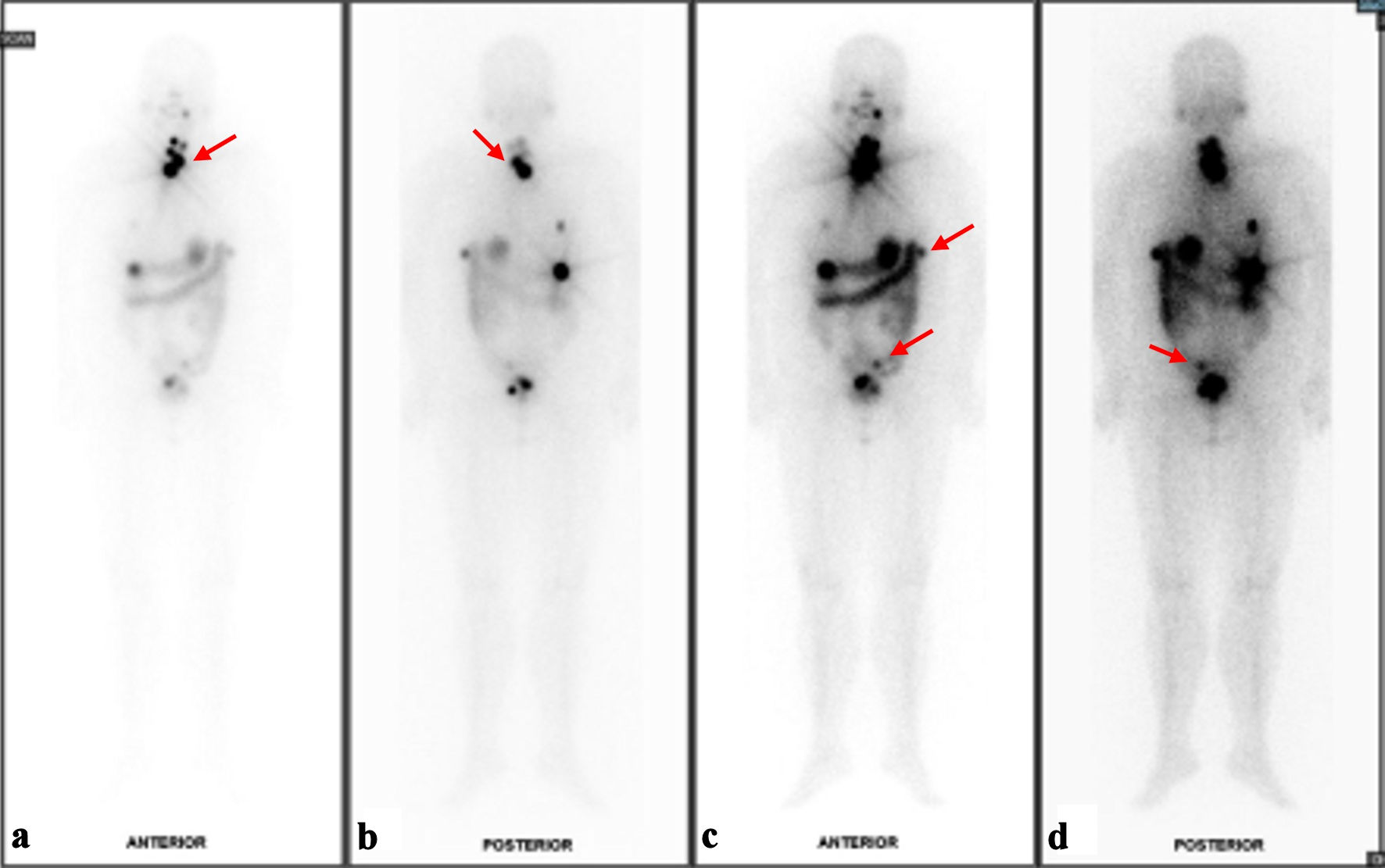
Figure 1. Ultrasound of the neck. (a) Right lobe mid pole nodule: well-circumscribed, solid, iso-hypoechoic, wider than tall with peripheral vascularity, 14 × 12 × 10 mm (arrow, intermediate suspicion). (b) Right lobe upper pole nodule: spongiform lesion, 6 × 4 × 3 mm (arrow, low suspicion). (c) Left lobe mid pole nodule: well-defined, solid, hypoechoic lesion with coarse internal calcifications, 7 × 7 × 5 mm (arrow, intermediate suspicion).

Figure 2. Histology images. (a) Struma ovarii tissue with evidence of thyroid follicular tissue with colloid seen within the follicles (arrows, hematoxylin and eosin (HE) × 20). (b) Struma ovarii tissue showing dense nuclei with no nuclear atypia (arrow, HE × 40). (c) Papillary thyroid carcinoma showing classical papillary formations, crowded overlapping nuclei (arrow, HE × 20). (d) Papillary thyroid carcinoma showing nuclear grooves, pseudoinclusions and central clearing (arrow)

Figure 3. Results of I131 whole body scan (WBS). (a) Foci of I131 uptake at the anterior neck likely represent remnant thyroid tissues although small volume disease cannot be ruled out on current baseline study (red arrow). (b) Posterior view of likely remnant thyroid tissues versus small volume disease (red arrow). (c) Several I131-avid foci in the upper abdomen and pelvic cavity with corresponding peritoneal nodules/nodularities are suspicious for residual disease (red arrows). (d) Indeterminate I131-avid focus at the sigmoid colon region (red arrow).


